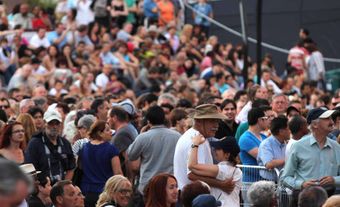Niagara-on-the-Lake, Ont
Niagara-on-the-Lake, Ont (Newark until 1798, Niagara 1798-1906). First capital of Upper Canada (Ontario) and the site of the Shaw Festival. Situated at the mouth of the Niagara River, on the shore of Lake Ontario, the town was settled in the mid-1780s by Loyalists and was the seat 1792-6 of the Parliament of Upper Canada.
As the capital and a garrison town Newark enjoyed the first documented performances of European music in Upper Canada. Thus a regimental band is known to have participated in the opening ceremonies of the first Parliament of Upper Canada at the Masonic Lodge, on 17 Sep 1792, and on 27 Dec of that year there was music at the first meeting of Freemasons. The band also played at the fortnightly officers' balls, as noted by Mrs John Graves Simcoe in April 1793 in her diary (published Toronto 1911). Another instance is documented for 4 Jan 1797: 'a band of music' led a procession 'playing Masonic airs.' Indeed, two centuries later military bands continued to preside at local functions.
Evidence of the relatively high standard of comfort attained in Niagara by 1830 are the square pianos imported from England by Captain Sibbald of the Royal Scots and by Lieutenant-Governor Colborne and still on display 150 years later in the local museum. A Temperance Band flourished in 1844, a Niagara Musical Society in 1855. Passing between Buffalo and Toronto, celebrities such as the violinist Ole Bull and the prima donna Anna Bishop gave recitals in the 1850s. A Band-Major, Joseph Harkness, offered in 1853 to train a choir at St Andrew's Church and to hold two fund-raising concerts for repairs to the church. Prior to the installation of organs in the town's churches, the Presbyterians relied on their precentor, John Crooks, who used a tuning fork (and possibly the three wooden tuning boxes held by the local museum) to lead the singing, while the Methodists were served by a Mr Varey, bass violist. The church of St Vincent de Paul installed a pipe and reed organ ca 1870 and other area churches soon followed suit. When Chautauqua began in Niagara during the summer of 1887, music courses were part of the program.
Niagara-on-the-Lake became the site of the Shaw Festival with the conversion of its court house into a theatre in 1962.

 Share on Facebook
Share on Facebook Share on X
Share on X Share by Email
Share by Email Share on Google Classroom
Share on Google Classroom

